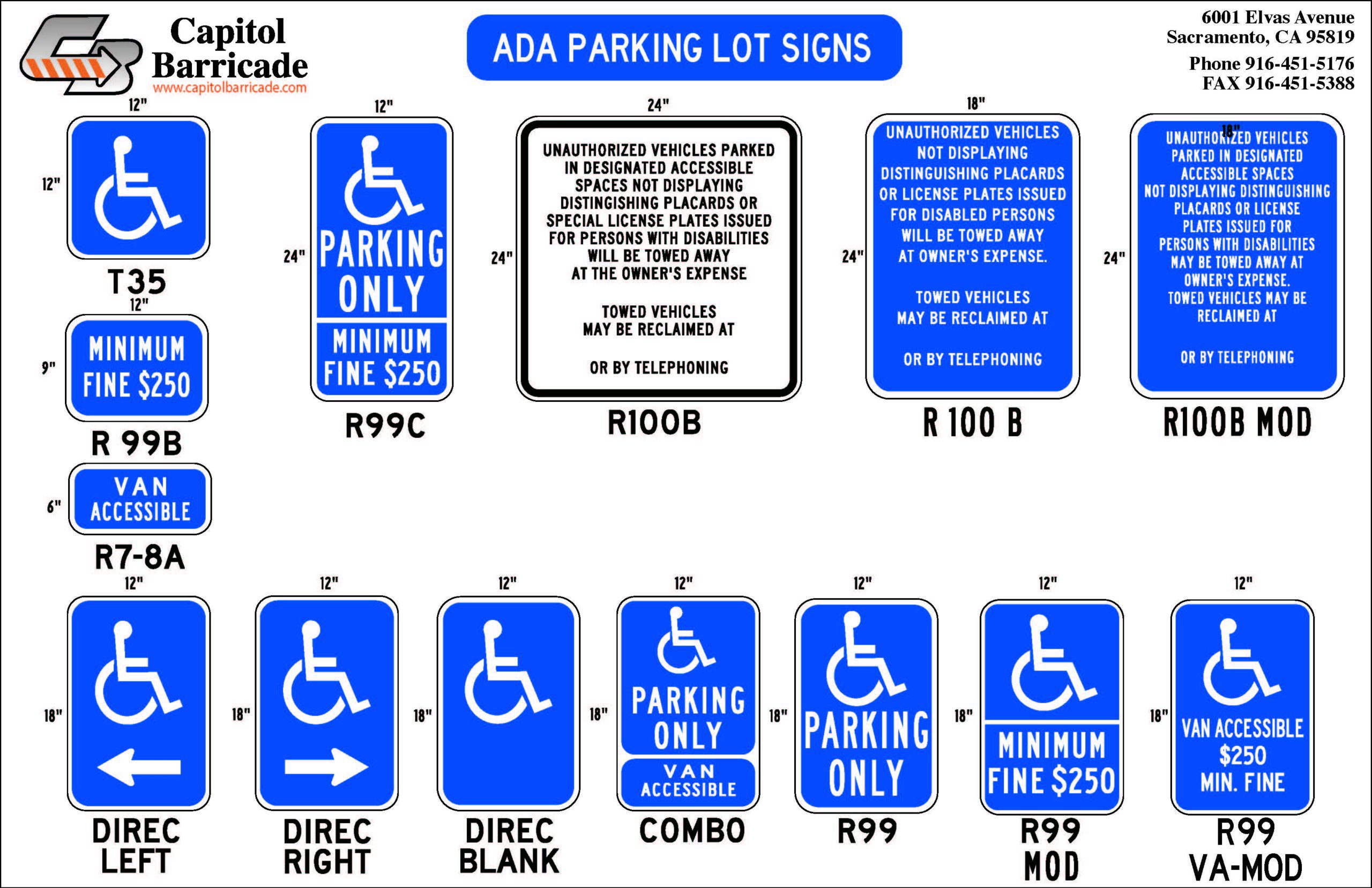Exploring Innovative Designs for Efficient ADA Signs
Exploring Innovative Designs for Efficient ADA Signs
Blog Article
Discovering the Secret Features of ADA Signs for Improved Ease Of Access
In the realm of accessibility, ADA indications act as silent yet effective allies, guaranteeing that spaces are comprehensive and navigable for individuals with disabilities. By integrating Braille and responsive components, these signs damage barriers for the aesthetically damaged, while high-contrast color pattern and clear font styles provide to diverse aesthetic demands. Moreover, their tactical positioning is not approximate yet instead a computed initiative to help with smooth navigating. Past these functions lies a deeper narrative about the advancement of inclusivity and the ongoing dedication to producing equitable areas. What extra could these indicators represent in our quest of universal access?
Importance of ADA Conformity
Making certain conformity with the Americans with Disabilities Act (ADA) is crucial for fostering inclusivity and equal gain access to in public spaces and offices. The ADA, passed in 1990, mandates that all public centers, companies, and transport solutions suit individuals with disabilities, guaranteeing they delight in the same rights and opportunities as others. Conformity with ADA criteria not only meets legal commitments however also boosts a company's online reputation by demonstrating its commitment to diversity and inclusivity.
One of the vital facets of ADA compliance is the application of available signs. ADA indicators are made to make sure that individuals with impairments can easily navigate through structures and rooms.
Additionally, adhering to ADA regulations can mitigate the risk of legal effects and prospective fines. Organizations that fall short to conform with ADA guidelines might deal with penalties or legal actions, which can be both damaging and monetarily troublesome to their public photo. Therefore, ADA compliance is important to fostering a fair atmosphere for everyone.
Braille and Tactile Components
The consolidation of Braille and responsive elements right into ADA signage embodies the principles of accessibility and inclusivity. These functions are critical for individuals that are blind or visually damaged, enabling them to browse public spaces with higher freedom and confidence. Braille, a tactile writing system, is necessary in providing composed details in a layout that can be quickly regarded through touch. It is normally positioned below the equivalent text on signs to ensure that individuals can access the info without aesthetic support.
Tactile elements prolong beyond Braille and include raised characters and icons. These elements are developed to be discernible by touch, enabling individuals to recognize area numbers, toilets, leaves, and various other important locations. The ADA establishes certain guidelines concerning the dimension, spacing, and positioning of these tactile elements to maximize readability and make certain consistency throughout various settings.

High-Contrast Color Pattern
High-contrast color plans play a critical function in enhancing the exposure and readability of ADA signage for people with visual problems. These systems are necessary as they optimize the difference in light reflectance in between text and background, ensuring that indicators are easily noticeable, even from a distance. The Americans with Disabilities Act (ADA) mandates making use of particular shade contrasts to accommodate those with minimal vision, making it an essential element of conformity.
The effectiveness of high-contrast shades lies in their capacity to attract attention in different lights conditions, consisting of poorly lit environments and locations with glare. Normally, dark text on a light background or light text on a dark history is employed to accomplish optimum contrast. As an example, black message on a yellow or white background supplies a raw visual difference that assists in fast recognition and comprehension.

Legible Fonts and Text Size
When taking see this website into consideration the design of ADA signage, the option of readable typefaces and ideal message dimension can not be overemphasized. These components are essential for guaranteeing that indicators come to individuals with visual disabilities. The Americans with Disabilities Act (ADA) mandates that font styles need to be sans-serif and not italic, oblique, manuscript, very attractive, or of uncommon type. These demands assist make certain that the message is conveniently legible from a range which the personalities are distinct to varied target markets.
According to ADA guidelines, the minimal text elevation must be 5/8 inch, and it should raise proportionally with checking out range. Uniformity in text size adds to a cohesive aesthetic experience, assisting people in browsing atmospheres efficiently.
In addition, spacing between letters and lines is integral to clarity. Adequate spacing stops characters from showing up crowded, enhancing readability. By sticking to these requirements, developers can considerably boost availability, guaranteeing that signs serves its desired purpose for all individuals, no matter of their visual capacities.
Effective Placement Approaches
Strategic positioning of ADA signs is necessary for taking full advantage of access and making certain conformity with lawful requirements. ADA guidelines stipulate that indications should be placed at an elevation in between 48 to 60 inches from the ground to guarantee they are within the line of view for both standing and seated people.
Furthermore, signs must be positioned beside the lock side of doors to enable very easy recognition before entry. This placement aids people find rooms and rooms without blockage. In cases where there is no door, indications ought to be located on the nearby surrounding wall. Consistency in indicator placement throughout a facility boosts predictability, lowering confusion and improving total user experience.

Final Thought
ADA signs play a crucial role in advertising accessibility by incorporating features that attend to the demands of individuals with specials needs. Incorporating Braille and tactile components ensures important details is available to the aesthetically impaired, while high-contrast shade systems and clear sans-serif font styles boost visibility throughout numerous lights conditions. Effective placement methods, such as proper placing heights and strategic places, additionally assist in navigating. These aspects jointly cultivate a comprehensive setting, emphasizing the importance of ADA compliance in making certain equal access for all.
In the realm of ease of access, ADA signs offer as quiet yet powerful allies, ensuring that rooms are accessible and comprehensive for people with disabilities. The ADA, enacted in 1990, mandates that all public centers, companies, and transportation services suit individuals with go right here handicaps, guaranteeing they take pleasure in the exact same rights and possibilities as others. ADA Signs. ADA indications are developed to make sure that people with specials needs can easily browse with buildings and areas. ADA standards stipulate that indicators ought to be mounted at a height in between 48 to 60 inches from the ground to ensure they are within the line of sight for both standing and seated people.ADA signs play a crucial role in promoting accessibility by incorporating features that attend to the the original source needs of people with impairments
Report this page